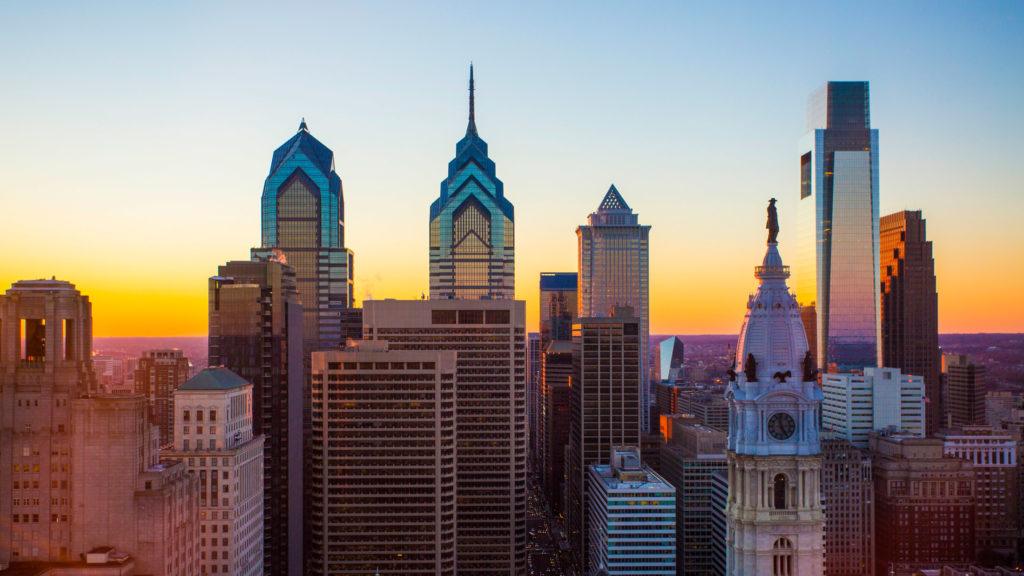
Date:
We all know that Earth is one of eight planets in the Solar System orbiting a star that we call the Sun, which is one of the more than 100 billion stars in the Milky Way Galaxy. That’s in effect our cosmic neighborhood, but It can be a little hard to grasp the scale of even just the Solar System and the vastness of space, but what if we instead shrunk our community down to a scale recognizable to most Philadelphians, what would the Solar System look like?
To create this map, we started with the Sun, which for this case of this scale is roughly the same size of the Swann Memorial Fountain in Logan Circle and also represents the center of our Philly Solar System. At this scale, the Sun would have a diameter of 123 ft (37.5 m), and in full scale the Sun’s diameter is 864,337 mi (1,391,016 km).
First, Mercury would orbit just about 1 mile (1.6 km) from our Sun and have a diameter of just 5 inches (13 cm). Mercury’s Orbit would pass through University City, south of Rittenhouse Square and encompass much of Center City, Philadelphia. At full scale, the first planet from the Sun has a diameter of 3,032 mi (4,879 km) and orbits at a distance of about 36 million miles (58 million kilometers).
Second, Venus’ orbit just about 1.8 miles (2.9 km) from our Sun would have it pass just over Pat’s and Geno’s (no word on what Venus’ preference might be), Temple University and the Philadelphia Zoo. Venus would have a diameter of 1 foot (30 cm). In reality, the second planet from the Sun has a diameter of 7,521 mi (12,104 km) and orbits at a distance of about 67 million miles (108 million kilometers).
Dipping into Camden, New Jersey, Fairmount Park, Fishtown and South Philadelphia, Earth’s orbit would be just over 2.5 miles (4 km) from our Sun and our planet would have a diameter of 1.1 feet (34 cm). At full scale, the our planet has a diameter of 7,918 mi (12,742 km) and orbits at a distance of about 93 million miles (150 million kilometers). Our Moon, at the furthest away mankind has ever traveled (roughly 238,900 miles (384,472 km) in reality), would orbit our Philly Earth at a distance that’s barely perceptible at this scale, 34 ft (10 m).
Next, Mars, rounding out the inner Solar System, would be the last planet to orbit mostly within the city limits of Philadelphia at just over 3.8 miles (6 km) away from the Philly Sun following an orbital path that takes it right between the Wells Fargo Center, Citizens Bank Park and Lincoln Financial Field to the south. The red planet at our Philly scale and have a diameter of 7 inches (18 cm). In the real Solar System, Mars has a diameter of 4,212 mi (6,778 km) and orbits at a distance of about 141.6 million miles (228 million kilometers).
Heading past the asteroid belt, Philly Jupiter would pass through the Philadelphia suburbs, with an orbit just about 13 miles (21 km) from our Sun. The largest planet in the Philly Solar System have a diameter of 12 feet (3.8 m). The real Jupiter has a diameter of 86,881 mi (139,822 km) and orbits at a distance of about 484 million miles (779 million kilometers).
The iconic ringed planet, Saturn, with an orbit just about 24 miles (38.6 km) from our Sun, would pass over Wilmington, Delaware and pass just south of Trenton, New Jersey and have a diameter of 10.3 ft (3.1 m). Saturn's iconic rings would spread about 25 ft (7.6 m). At full scale, the ringed planet has a diameter of 72,367 mi (116,464 km) and orbits at a distance of about 891 million miles (1.4 billion kilometers). Saturn's rings stretch roughly 175,000 miles (282,000 km).
The seventh planet, Uranus, would orbit just about 48 miles (77.3 km) from the Philly Sun and have a diameter of 4.5 ft (1.4 m). This orbital path would take it just about to the Jersey Shore, through the Lehigh Valley and over Reading. The actual diameter or Uranus is 31,518 mi (50,723 km). The ice giant orbits at a distance of about 1.8 billion miles (2.9 billion kilometers).
Philly Neptune’s orbit of just over 75 miles (121 km) from the Sun would take it all the way to New York City over the Atlantic Ocean and south of Cape May, New Jersey. At the Philly scale, Neptune have a diameter of 4.4 ft (1.3 m). The full scale of the eighth planet from the Sun has a diameter of 30,599 mi (49,244 km) and orbits at a distance of about 2.7 billion miles (4.5 billion kilometers).
Finally, Philly Pluto’s irregular orbit would orbit just about 99 miles (159 km) from the Sun and have a diameter of 2.5 inches (6 cm). At full scale, the king of the Dwarf Planets has a diameter of 1,477 mi (2,377 km) and orbits at a distance of about 3.7 billion miles (5.9 billion kilometers).
The outer limits of the Philly Solar System would be roughly 275 to 375 miles from Logan Square stretching to Boston, Rochester and Pittsburgh and potentially as far as Montreal, Toronto and Cleveland.
While this all may give you an idea of the true scale of our Solar System, we also took a look at, at this Philly scale how far away the next closest star to us would be. Proxima Centauri, which is about 4.25 light years away in reality, would be roughly 673,000 miles (1,083,680 km) away at Philly Scale.
Note: The Planets as displayed on the interactive map are not to scale.

